Island of Flores

Don't miss
- visit the Boqueirão Environmental Visitor’s Centre
As a part of the global network of UNESCO Biosphere Reserves, the island of Flores, the westernmost territory of the Azores and Europe, has landscapes that are true havens. Together with the island of Corvo, this island is part of the western group of the Azores archipelago.
If there are places privileged by nature, the island of Flores is one of them. Its 141.4 km2 surface divided into two municipalities, Santa Cruz and Lajes, plus the friendliness of its people, make it a must see destination in the Azores.
It is estimated that its discovery was around 1452, by the navigator Diogo de Teive, and although initially called the island of São Tomás or Santa Iria, its name was quickly changed to Flores, due to the abundance of yellow flowers, the goldenrod, which covered the entire island.
Characterised by a heavily indented and extremely rugged coastline, Flores is an island of water: waterfalls, lakes, streams and wells form a catalogue of unforgettable experiences, which seem to concentrate within themselves all the natural beauty that is scattered across the other islands of the Azores.
Due to its small size it is not hard to cover the entire island, and a good suggestion to set out on your exploration is to start the day on a boat trip, from which you can have a different view of the breath-taking rock structures and caves. This is the case of the Santa Cruz das Flores Arch and the islet of Maria Vaz, which are visible only from the sea, like the Enxaréus and Galo caves.
The Bay of Alagoa, consisting of a set of islets and shoals, is perfect for scuba diving, especially in the Baixa do Amigo, the Ponta da Caveira and the islet of Garajau, where it is common to find dusky groupers. You can also fish in the rock pools, at sea or in the rivers, where there are trout in abundance. Canyoning is also an excellent option to explore this island, and the best places to practice are the Algares, Cabo, Mosteiros and Monte Gordo rivers.
Returning to land you can enjoy a little relaxation in the natural bathing pools. Choose those at Santa Cruz or the beaches along the Lajes das Flores. For something "wilder" the choice should fall on the pools that form at the base of the island’s many waterfalls, such as that on the Ribeira Grande, with a 300 metre drop, and Poço de Bacalhau, with a drop of 90 metres - unmissable!
As you follow the many footpaths on the island, you can observe the various migratory birds that fly here, because Flores is one of the best destinations in the Azores for birdwatching, especially in Lagoa Branca, in the central part of the island, the months of September to November being the best for this activity.
When lunchtime arrives, you must enjoy the typical dishes of the island: sausage with yams, watercress soup, and plenty of fish and seafood, accompanied by the island’s cheese and wine.
In the afternoon, take the opportunity to visit the central area of the island, where there are seven volcanic craters that have become beautiful lakes, providing a magnificent landscape. Lagoa Funda, at 105 metres deep, deserves special attention, but the other six - Branca, Seca, Comprida, Rasa, Lomba and Funda das Lajes - are equally beautiful and well worth a visit.
On a land-based trip, one of the most famous natural landmarks in the Azores is the Rocha dos Bordões. This is a group of large vertical basalt columns which, seen together, are similar to a giant pipe organ.
Also not to be missed is the view you get from Morro Alto, the highest point on the island at 911m above sea level, from which you see a landscape of deep green, where the native laurel forest is still in evidence.
On Flores, you are at the westernmost point of Europe, the Islet of Monchique, which served in the time of celestial navigation as the point of reference for the adjustment of routes and verification of nautical instruments.
In Santa Cruz das Flores, you can visit the Parish Church of Nossa Senhora da Conceição, which stands out among the other buildings for its grand façade, and the central Praça do Marquês de Pombal with its colourful Império (chapel). Note also the Church of São Boaventura, and the Flores Regional Museum that encompasses the Ethnographic Museum and the Pimentel de Mesquita House Museum.
In Lajes das Flores, there is the Church of Nossa Senhora do Rosário, which overlooks the harbour and part of the town, and from which you can depart to discover the Impérios, the houses of basalt stone and the 1743 bridge over the Ribeira dos Morros.
Flores becomes very lively during the Feasts of the Holy Spirit, which have a deep significance on this island, as well as the Santa Cruz Festivities and the Emigrant Festival in Lajes.
Lace and embroidery, blankets woven on old-fashioned looms and kernels of hydrangea flowers are excellent choices to take home with you as souvenirs of the island.


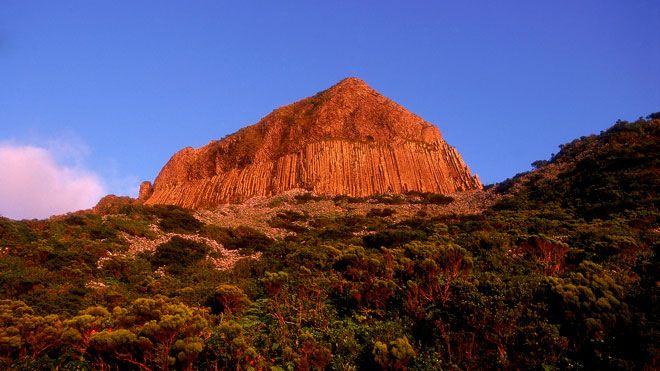






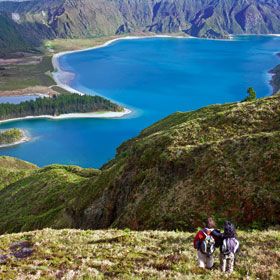

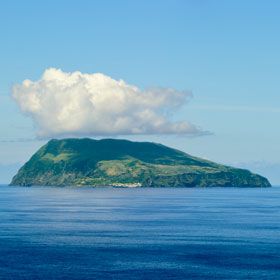
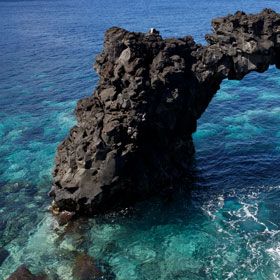


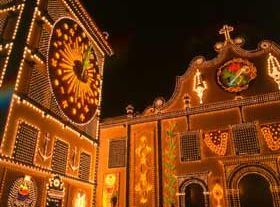
 Explore
Explore 
 Remember and Share
Remember and Share 


